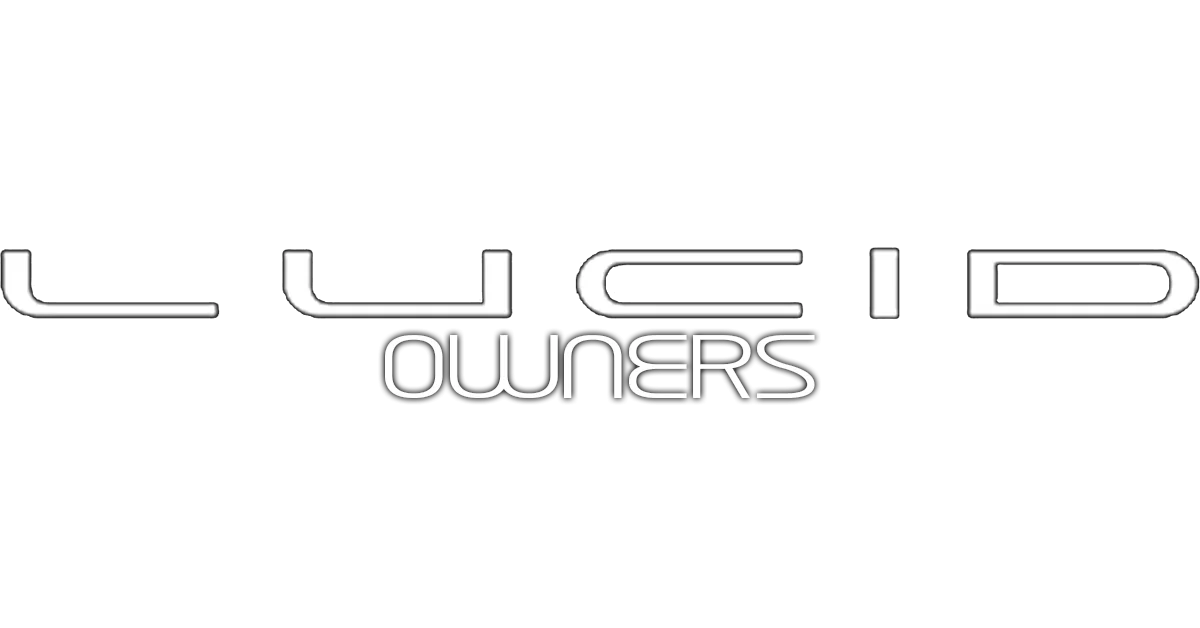- Joined
- Apr 30, 2023
- Messages
- 1,141
- Reaction score
- 1,109
- Cars
- Lucid Grand Touring
- Referral Code
- F329HA4P
Yeah it’s stuck in 1999; and not good 1999… Vengaboys is missing… 99… lol.Mine has no such adjustment. The portal is pretty sad, actually.
Yeah it’s stuck in 1999; and not good 1999… Vengaboys is missing… 99… lol.Mine has no such adjustment. The portal is pretty sad, actually.
This is one thing where Tesla still is a one up over Lucid.The internal dip switches are factory set to 80 A. They are easy to change if you want to. During installation, the cover will be off and the switches are right there in front.
Yeah it’s stuck in 1999; and not good 1999… Vengaboys is missing… 99… lol.
I switched to using a different charging station at my house for this reason. It automatically adjusts its current signaling as more or less excess solar power is available. So I can charge using only solar without dipping into utility power, and without exporting it when I'd rather be charging the car.This is one thing where Tesla still is a one up over Lucid.
It was very nice to be able to change the charging amps right on the Tesla app.
It was very convenient for me having solar.
So sadMine has no such adjustment. The portal is pretty sad, actually.
*robot voice*
I think the last software update for the LCHCS was around two years ago. Maybe more will happen once V2H is introduced.So sad
Yah they will get their. Just gotta play the waiting gameI think the last software update for the LCHCS was around two years ago. Maybe more will happen once V2H is introduced.
Wow that’s sad.I think the last software update for the LCHCS was around two years ago. Maybe more will happen once V2H is introduced.
IfI think the last software update for the LCHCS was around two years ago. Maybe more will happen once V2H is introduced.
I still have my Lucid-issue rose-colored glasses on. But I don't wear them all the time.
Same here, but it is deservedly so.I still have my Lucid-issue rose-colored glasses on. But I don't wear them all the time.
Since everyone is comparing their speed bumps on the WiFi setup, I thought I would offer mine. It seems the WiFi stack does not like a password with a $ symbol in it. Took me a couple of attempts before I realized that upon restart the password was truncating everything ahead of the $. I have a healthy number of IoT devices and this was a first for this network setup. Using a different SSID that had a password without the $ worked.The LCHCS always appeared correctly in my router's client list on 192.168.1.xxx. I just couldn't enter its IP address in a browser window and get a home page in return.
While the LCHCS was connected to my home network at 192.168.1.XXX, I also couldn't connect to it on its setup SSID after power cycling. Only by turning off my home wifi could I connect to it at 192.168.5.1 after power cycling, and it worked perfectly and instantly. I've done this a dozen times at least, and had phone phone and laptop properly connected to the setup SSID. There appears to be something in the LCHCS's wifi TCP-IP stack that breaks when it is connected to a 192.168.1.x subnet. Once disconnected, it works fine.
Nice report.Thanks for @DeaneG for simplifying this process.
1) Use 3AWG or 2AWG wire and 1/4" compression lugs for a 100-amp circuit breaker (80 amp charging rate)
2) Lucid's LHCS can replace a previous Tesla HPWC - just set the Lucid charger's dip switches for the correct charging rate corresponding to 80% of existing circuit breaker size.
3) Installation requires a T20 Torx security bit
4) Cover removal will be difficult
5) Do not install batteries
6) If your home Wifi LAN is on 192.168.1.xxx, temporarily change it to 192.168.2.xxx until you have successfully installed the charger and configured it with your Wifi SSID and password. The unit's factory firmware has a bug which prevents it from communicating properly on 192.168.1.xxx networks. A future firmware release will fix this.
7) If the LHCS 'Lucid' logo begins blinking orange after installation and wifi configuration, that means it is working on your wifi and is updating firmware. DO NOT turn it off.
8) Once the LHCS has completed its firmware update, you can change your home network back to 192.168.1.xxx if you don't need wifi access to the charger.
Just the hope of it in the future, with some additional (unannounced) hardware and installation....I can charge to 100% overnight with a normal 220 outlet. What is the purpose of adding this if I can't use my car as a back up to my home?
And speed. You can’t charge as fast on a 14-50. That may or may not matter to you, but it is a difference.Just the hope of it in the future, with some additional (unannounced) hardware and installation.
